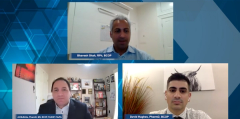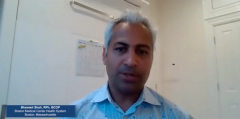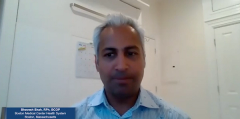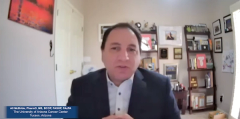
SYK Inhibitors to Treat ITP: Clinical Implications
Episodes in this series

Implications for using SYK inhibitors as second-line therapy for immune thrombocytopenia over other available treatment options based on current data.
Bhavesh Shah, RPh, BCOP: Moving into the clinical evidence, how do you decide whether to use a SYK inhibitor or a TPO [thrombopoietin] receptor agonist in your practice? I also wanted to talk about the results that came out at ASH [American Society of Hematology Annual Meeting in 2019] with James Bussel at second-line fostamatinib vs third-line fostamatinib. Dave or Ali, you want to take that?
David Hughes, PharmD, BCOP: Ultimately, I wish there was a magic wand that said, “Let’s look at a patient’s biology and see if ITP [immune thrombocytopenia] is affecting destruction or production and how we can view that.” Unfortunately, we don’t have the magic answer. Most patients we know from practice will respond to some level of TPO agonism in the body, and in most cases patients will see production of platelets to some degree.
Having said that, when looking at the overall response rates, fostamatinib in the FIT1 and FIT2 trial is a heavily pretreated patient compared with some of the earlier trials that were done for romiplostim and eltrombopag. In these trials, the patients were already refractory to multiple lines of therapy. Providing fostamatinib as a second-line option before TPO agonism sounds appealing, and you always have TPO agonism to fall back on.
Bringing up the subanalysis that was presented at ASH in the second-line setting, in that trial, we actually saw higher response rates and higher achievement of platelets when fostamatinib was used in the second-line therapy, as opposed to the later-line therapy. Looking at it more along the lines of what we see with other available agents for TPO, we’re seeing a higher response rate and achievement of safe platelet levels when using fostamatinib as a second-line therapy.
Ali McBride, PharmD, MS, BCOP, FASHP, FAzPA: David, that raises the question: Where do you place this therapy? If you look at the guidelines we talked about before, the international guidelines published in Blood in 2019, you had 3 domains: initial, subsequent, and whatever we haven’t tried that had a case report. That provided an opportunity for treatment but not to find out where the best therapy is or efficacy. That second-line piece is a great discussion and hopefully, we can see more of these data as we have real-world data come up. Because Bhavesh was talking about the registries, it will be very important if we can see how long patients last in those therapies in second line.
Additionally, the 1 thing we haven’t seen, which I hope to see as more data originate, is if we move the fostamatinib to a second line, after a patient fails steroids, rituximab, or IVIg [intravenous immunoglobulin]—whatever the case may be—what happens downstream? Do we reduce or have a long-lasting effect of that reduction of that autoimmune-based product, which will mean the destruction of platelets? That pertains to where in line you have better outcomes but also to, as with immunotherapy and some other treatments, augmenting better outcomes after proceeding to a third- or fourth-line therapy. That’s an undiscovered territory of research that we hope to find out, as well as the discussion of add-ons: Do we put 2 and 2 together? That also came out on the discussion point from that ASH abstract.
Newsletter
Stay informed on drug updates, treatment guidelines, and pharmacy practice trends—subscribe to Pharmacy Times for weekly clinical insights.























































































































































































































